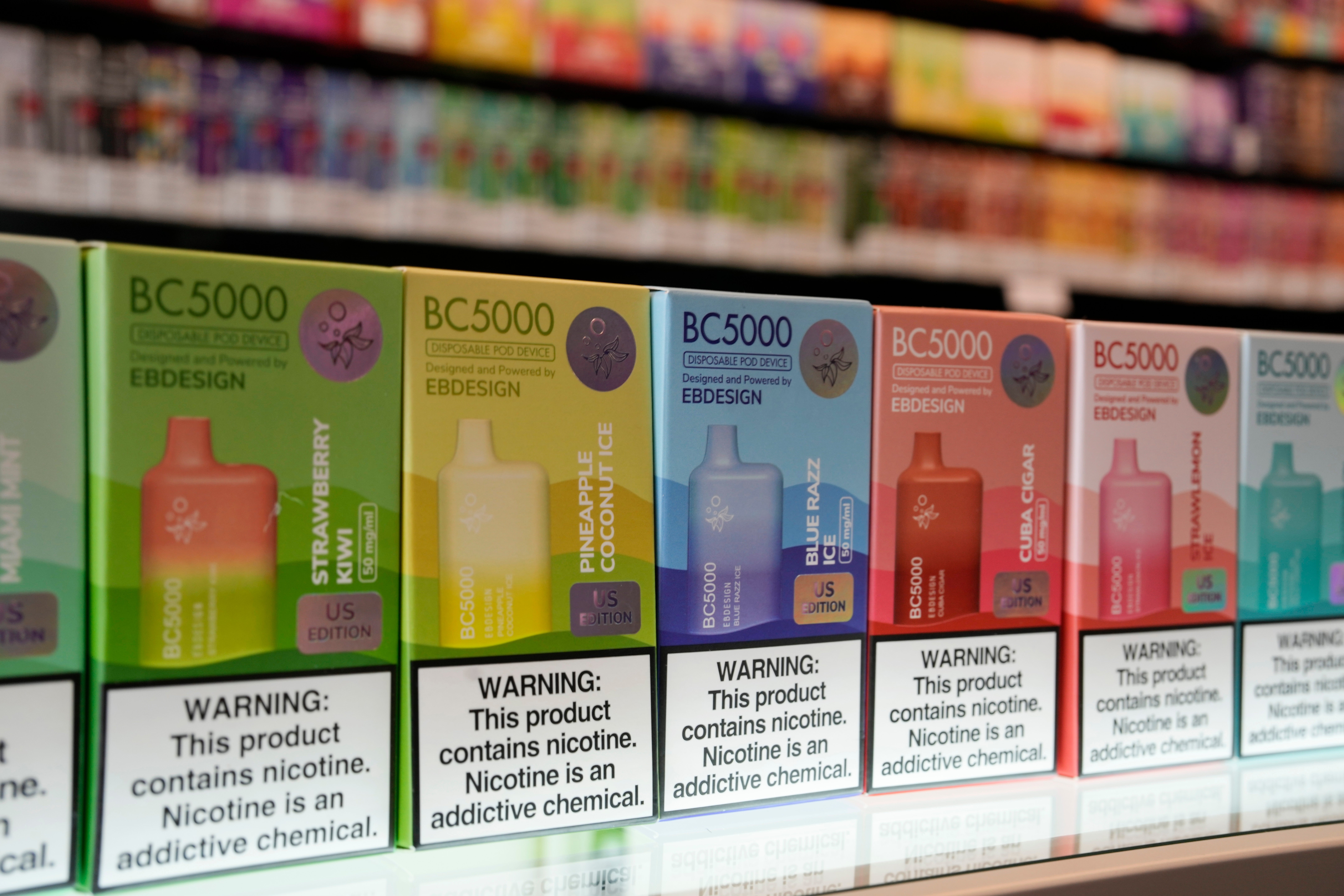Vaping by high school students dropped this year, says US report
A new government report shows fewer high school students are vaping

Your support helps us to tell the story
From reproductive rights to climate change to Big Tech, The Independent is on the ground when the story is developing. Whether it's investigating the financials of Elon Musk's pro-Trump PAC or producing our latest documentary, 'The A Word', which shines a light on the American women fighting for reproductive rights, we know how important it is to parse out the facts from the messaging.
At such a critical moment in US history, we need reporters on the ground. Your donation allows us to keep sending journalists to speak to both sides of the story.
The Independent is trusted by Americans across the entire political spectrum. And unlike many other quality news outlets, we choose not to lock Americans out of our reporting and analysis with paywalls. We believe quality journalism should be available to everyone, paid for by those who can afford it.
Your support makes all the difference.Fewer high school students are vaping this year, the government reported Thursday.
In a survey, 10% of high school students said they had used electronic cigarettes in the previous month, down from 14% last year.
Use of any tobacco product— including cigarettes and cigars — also fell among high schoolers, according to the Centers for Disease Control and Prevention report.
“A lot of good news, I’d say,” said Kenneth Michael Cummings, a University of South Carolina researcher who was not involved in the CDC study.
Among middle school student, about 5% said they used e-cigarettes. That did not significantly change from last year’s survey.
This year's survey involved more than 22,000 students who filled out an online questionnaire last spring. The agency considers the annual survey to be its best measure of youth smoking trends.
Why the drop among high schoolers? Health officials believe a number of factors could be helping, including efforts to raise prices and limit sales to kids.
The Food and Drug Administration has authorized a few tobacco-flavored e-cigarettes intended to help adult smokers cut back. The age limit for sales is 21 nationwide.
Other key findings in the report:
— Among students who currently use e-cigarettes, about a quarter said they use them every day.
— About 1 in 10 middle and high school students said they recently had used a tobacco product. That translates to 2.8 million U.S. kids.
— E-cigarettes were the most commonly used kind of tobacco product, and disposable ones were the most popular with teens.
— Nearly 90% of the students who vape used flavored products, with fruit and candy flavors topping the list.
In the last three years, federal and state laws and regulations have banned nearly all teen-preferred flavors from small, cartridge-based e-cigarettes, like Juul.
But the FDA has still struggled to regulate the sprawling vaping landscape, which now includes hundreds of brands sold in flavors like gummy bear and watermelon. The growing variety of flavored vapes has been almost entirely driven by a wave of cheap, disposable devices imported from China, which the FDA considers illegal.
The CDC highlighted one worrisome but puzzling finding from the report. There was a slight increase in middle schools students who said they had used at least one tobacco product in the past month, while that rate fell among high school students. Usually those move in tandem, said Kurt Ribisl, a University of North Carolina researcher. He and Cummings cautioned against making too much of the finding, saying it might be a one-year blip.
___
Perrone reported from Washington.
___
The Associated Press Health and Science Department receives support from the Howard Hughes Medical Institute’s Science and Educational Media Group. The AP is solely responsible for all content.